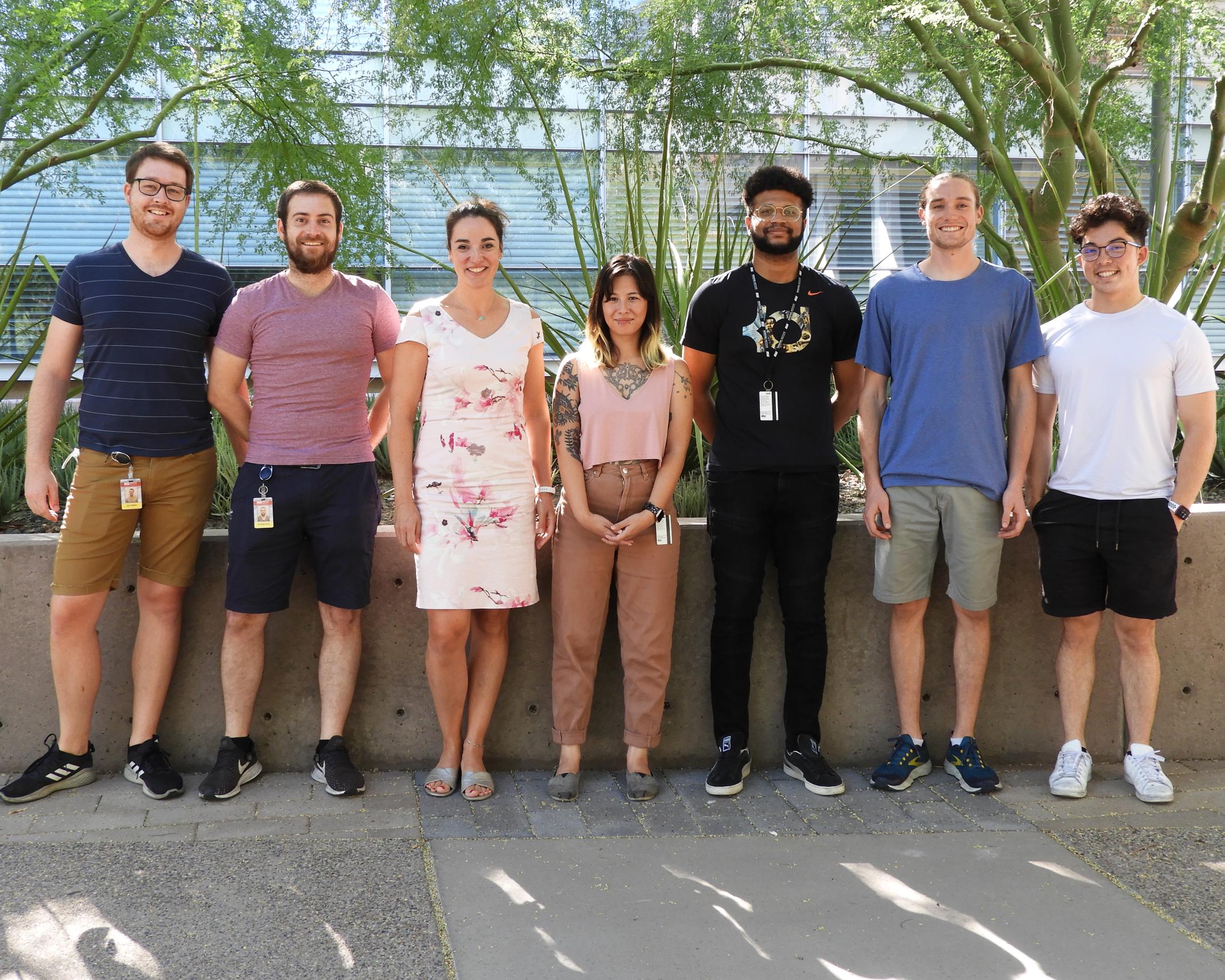Doctoral student joins ASU School of Molecular Sciences with gusto

Jordan Sinclair, doctoral student in ASU’s School of Molecular Sciences. Photo by Mary Zhu/ASU
Jordan Sinclair, who hails from the University of Delaware, joined Arizona State University's School of Molecular Sciences, a unit of The College of Liberal Arts and Sciences, as a PhD student last month.
“I was looking for a program that checked all my boxes as completing a PhD is one of the largest commitments a person can make,” Sinclair said. “It’s like a tier under marriage, getting a tattoo or buying a house.”
“Assistant Professor Christina Birkel, my choice of PhD adviser, has cultivated a research space I find very versatile. Her focus is on nanomaterials, solid-state chemistry and synthesis. The fact that these fields can blossom into so much more is an absolute dream for me as a researcher because I can have free rein with my work.”
In this age of machine learning and data-driven research, a plethora of possible materials are being investigated, but synthesizing them in the lab, especially in the solid state, is often anything but straightforward.
Sinclair wants to attack the problem of finding alternative energy sources and materials. The technological needs of our society are greatly outpacing the capacity and capability of current materials. Each year companies like Apple, Tesla and Intel have to expend lots of effort to match public demand and the cost of manufacturing products.
Sinclair wants to contribute to the synthesis of largely commercializable and efficient materials. Producing solid-state materials for batteries, computers and other products is a rapidly growing field especially since their manufacturing costs are decreasing significantly.
“I chose SMS because of the limitless and invaluable opportunities for collaborations both within SMS and across ASU as a whole. Other schools across the nation are often times very myopic,” Sinclair said.

The Birkel group in the School of Molecular Sciences: (from left): Jan Paul Siebert, Andreas Reitz, Christina Birkel, Rose Snyder, Jordan Sinclair, John Jamboretz and Andrew Wasserbeck. Photo by Lauren Tackett/ASU
When it comes down to pinpointing the specific moment that sparked Sinclair’s interest in the sciences, he says it was during his elementary school days. From a young age on visits with his father, he observed the process of producing silica-based gels in their entirety at the Huber Corporation. His father’s lab performed many other reactions that inspired him, including high-pressure synthesis.
Sinclair says that starting his undergraduate years at the University of Delaware, he immediately chose to major in chemistry almost impulsively. Despite his extracurricular difficulties he wanted a challenge, he wanted rigor and he wanted to build upon the already strong foundation of his primary education.
Sinclair was awarded the C. Frank Shaw lll Undergraduate Inorganic Research Fellowship last year by the University of Delaware in recognition of his outstanding achievements in inorganic chemistry. Sinclair’s research in Professor Svilen Bobev’s (University of Delaware) lab has resulted in a first-author paper titled "Synthesis and structural characterization of orthorhombic Cu3-xSb (x~0.13 (1)) and hexagonal Cu3Sb-based phases," which has been submitted to the Journal Zeitschrift fur Kristallographie.
Last month the School of Molecular Sciences welcomed its new class of 38 graduate students (30 PhDs and eight master's degree students). They are a diverse group from 11 states in the U.S. as well as Bangladesh, Cameroon, China, Ghana, India, Indonesia, Korea, Nigeria, the Philippines, Sri Lanka and Turkey. The students have just completed an extensive two-week teaching assistant training, learning about the instructional philosophy of the school. They are currently embarking on their next set of challenges: finding and settling into a research lab and deciding on a research topic.
More Science and technology

ASU student researchers get early, hands-on experience in engineering research
Using computer science to aid endangered species reintroduction, enhance software engineering education and improve semiconductor…

ASU professor honored with prestigious award for being a cybersecurity trailblazer
At first, he thought it was a drill.On Sept. 11, 2001, Gail-Joon Ahn sat in a conference room in Fort Meade, Maryland.…

Training stellar students to secure semiconductors
In the wetlands of King’s Bay, Georgia, the sail of a nuclear-powered Trident II Submarine laden with sophisticated computer…